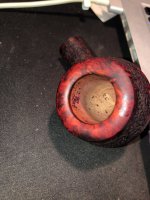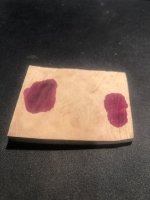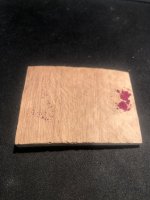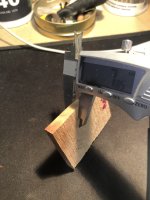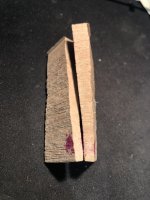I just got a Nuttens Heritage sandblast Bing the other day. To my dismay it had a bowl coating, but I really wanted the pipe so I bought it anyway. When I received it I considered removing the coating but upon further inspection it didn't seem too bad. Definitely not like the good awful one Peterson used to use a couple years ago.
Anyway, first smoke it imparted an off taste to the tobacco. I just smoked my fourth bowl from it this morning and the taste is pretty much gone. I wish all coatings were as quick and painless as this one was.
Anyway, first smoke it imparted an off taste to the tobacco. I just smoked my fourth bowl from it this morning and the taste is pretty much gone. I wish all coatings were as quick and painless as this one was.








